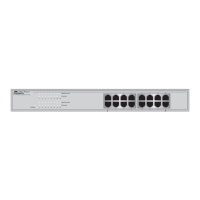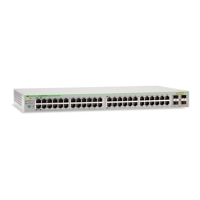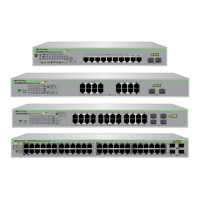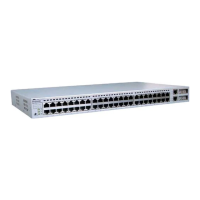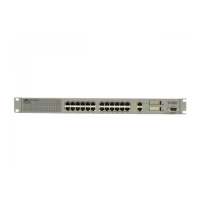Chapter 27: Port-Based Authentication Commands
520 Section IV: Security and Traffic Control
piggyback
Specifies that the 802.1x authenticator port enables or disables
authenticating other devices after authenticating one device when
the mode parameter is set to single. By default, authenticating
other devices is disabled. When the mode parameter is set to
multi, this setting is ignored.
guestvlan
Specifies the guest VLAN in the VLAN name or VID on the 802.1x,
MAC address-based, or Web-based authenticator port. To specify
no guest VLAN, use the keyword none. When authenticated, the
authenticator port belongs to another VLAN. When failed to be
authenticated, the authenticator port is back to the guest VLAN.
The default setting is none.
securevlan
Specifies how the authenticator with the multiple supplicants
authenticates the second or following supplicant when using a
dynamic VLAN. The default setting is none.
on
The second or following supplicant must be authenticated through
the same VLAN that the first supplicant was authenticated. This is
the default setting.
off
The second or following supplicant passes authentication;
however, it belongs to the same VLAN as the first authenticated
supplicant.
vlanassignment
Specifies that the 802.1x, MAC address-based, or Web-based
authenticator port enables or disables Dynamic VLAN.
vlanassignmenttype
Specifies that Dynamic VLAN is set based on ports or users (MAC
addresses). This parameter is effective when the mode is multi and
vlanassignment is enabled. The default setting is port.
Description
Use this command to change the authenticator port settings for 802.1x
Port-based authentication on the specified port.
Here are references for other usage of this command:
To change the authenticator port settings for all authentication
methods including 802.1x Port-based, MAC address-based, and
Web-based authentication on the specified port, see “SET
PORTAUTH PORT (Authenticator Port for All Methods)” on
page 514.

